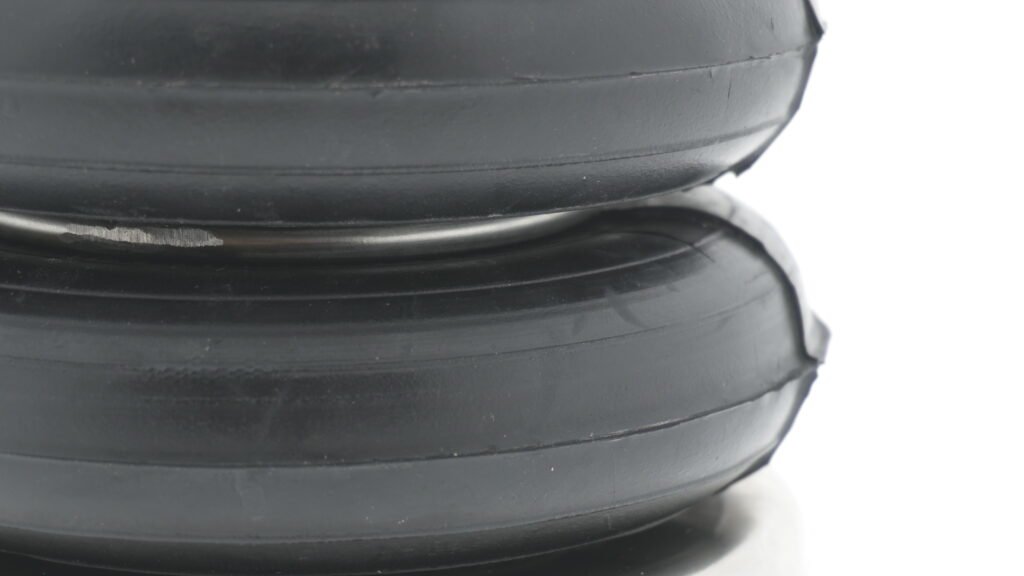
Air Bellows: A Key Component in Renewable Energy Infrastructure
The increasing shift toward sustainable energy solutions has led to a surge in demand for high-performance air bellows. As industries strive to optimize efficiency and longevity, air bellows have emerged as a crucial component in various renewable energy applications. Their role in mitigating vibrations, ensuring load stability, and enhancing operational longevity has positioned them as a preferred choice in the wind, solar, and hydroelectric sectors.
Modern air bellows come in single, double, and triple convolution designs, each suited for different load-bearing and shock absorption needs. They operate at pressures up to 12 bar, ensuring maximum force output with minimal energy consumption. The materials used, such as high-resistance elastomers and galvanized steel, ensure long-lasting performance. Their flexible design allows them to fit into various renewable energy applications, making them a versatile and cost-effective choice for the industry.
Enhancing Vibration Isolation in Wind Turbines
In wind energy production, reducing mechanical vibrations is paramount. Air bellows provide exceptional vibration isolation, extending the lifespan of wind turbines and reducing maintenance costs.
- Absorbing Mechanical Stresses: Wind turbine nacelles are subjected to high-frequency oscillations, and air bellows significantly dampen these effects.
- Load Compensation: By adjusting air pressure, these systems maintain stability, even in varying wind conditions.
- Reducing Noise Pollution: The use of air bellows minimizes structural noise, contributing to a quieter wind farm operation.
Advanced air bellows models are engineered with stainless steel bead rings and reinforced rubber composites, making them highly durable in extreme wind turbine environments. They are designed to handle load capacities of up to 450 kN per bellow, ensuring stability under extreme wind loads. The low-frequency vibration absorption reduces stress on mechanical components, further increasing turbine efficiency and lifespan.
Optimizing Efficiency in Solar Energy Systems
Photovoltaic panels and solar tracking systems rely on precise positioning mechanisms to maximize energy absorption. Air bellows play a key role in ensuring smooth motion and precise tracking.
- Height Control for Solar Panels: Air bellows actuators assist in panel positioning, adapting to solar angles.
- Durability in Harsh Environments: Resistant to UV exposure, moisture, and temperature fluctuations, air bellows ensure long-term performance.
- Energy Efficiency: Unlike traditional mechanical actuators, air bellows consume minimal energy while delivering high-force output.
These actuators operate with high repeatability and require no lubrication, making them an ideal low-maintenance solution for solar applications. Modern designs include crimped and bead-ring variants, which allow for flexible integration into compact solar structures. With a force range of up to 300 kN, they provide effective support for large-scale solar farms where load variation is common.
Stabilizing Hydroelectric Power Plants
In hydroelectric facilities, air bellows contribute to vibration control and load distribution, crucial for maintaining structural integrity and operational efficiency.
- Shock Absorption in Turbines: Air bellows dampen mechanical shocks, preventing premature wear on hydro turbines.
- Pressure Regulation: By adjusting air volume, they optimize fluid flow and enhance energy conversion efficiency.
- Maintenance-Free Operation: Their non-mechanical nature eliminates frequent lubrication and replacement costs.
The four-ply high-strength air bellows operate at up to 12 bar, handling dynamic loads efficiently in hydroelectric applications. Their ability to maintain consistent pressure distribution ensures efficient turbine operation with minimal mechanical degradation. The use of anti-corrosive elastomers makes them ideal for high-moisture environments, ensuring longevity.
Superior Material Composition for Extreme Conditions
To withstand harsh environmental conditions, air bellows are manufactured using high-performance elastomers and reinforced rubber-metal composites.
- Natural Rubber (NR/SBR): Offers high dynamic performance and flexibility in varied temperatures.
- Nitrile Rubber (NBR): Resistant to oils, fuels, and ozone exposure, making it ideal for outdoor applications.
- Chlorobutyl (CIIR): Provides excellent resistance against chemical degradation.
Modern air bellows also include stainless steel mounting plates for enhanced durability and customized bead ring designs, allowing for greater flexibility in mounting options. These materials ensure resistance to ozone, oil mist, and extreme weather conditions, making them the ideal choice for renewable energy applications.
Reducing Carbon Footprint with Air Bellows Technology
Industries utilizing air bellows contribute to a lower carbon footprint by reducing mechanical wear, energy losses, and excessive resource consumption. Their ability to enhance efficiency directly impacts sustainability efforts across multiple energy sectors.
- Longer Equipment Lifespan: Reduces the need for frequent replacements, minimizing waste production.
- Lower Energy Consumption: Compared to hydraulic and pneumatic alternatives, air bellows require less power to operate.
- Eco-Friendly Materials: Manufacturers now focus on recyclable and biodegradable rubber compounds, further reducing environmental impact.
Advanced air bellows feature optimized elastomer formulations, reducing chemical waste and ensuring compliance with green manufacturing standards. Their ability to function without lubricants eliminates oil-based pollutants, further lowering the environmental footprint.
As the renewable energy industry expands, the role of air bellows in stabilizing, isolating, and enhancing mechanical efficiency will continue to grow. Their ability to mitigate vibrations, reduce operational costs, and extend equipment lifespan makes them a valuable investment for sustainable energy solutions. Companies like Tevema lead the way in developing high-quality air bellows tailored for renewable energy applications, ensuring long-term reliability and eco-friendly performance.
